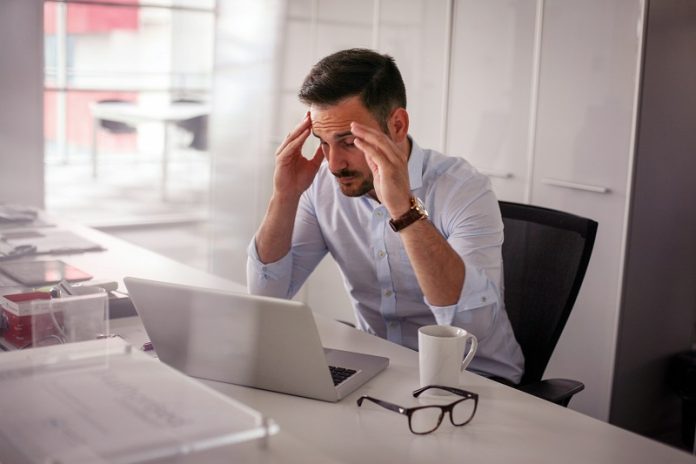
A new study from the University of Turku in Finland has found that reducing daily sitting time can prevent back pain from worsening over a six-month period.
This finding adds to the growing understanding of the link between physical activity and back pain, while also exploring the mechanisms behind how movement affects back health.
Although it might seem intuitive that less sitting could help with back pain, previous research has been limited.
The team from the Turku PET Center and the UKK Institute in Finland focused their research on overweight or obese adults who spend most of their day sitting, a group particularly at risk for both back pain and other health issues.
Participants in the study were able to reduce their sitting time by an average of 40 minutes per day over the six months.
The results, which were published in the journal BMJ Open, suggest that even modest reductions in sitting time can have a significant impact on preventing back pain from getting worse.
The study’s participants were described as typical middle-aged adults who led mostly sedentary lifestyles. They spent much of their time sitting, did little exercise, and had gained some extra weight—all factors that increase the risk not just for cardiovascular disease but also for back pain.
According to Jooa Norha, a doctoral researcher and physiotherapist at the University of Turku, these factors highlight the importance of addressing sitting time to prevent or manage back pain.
Earlier studies had hinted at a link between excessive sitting and back pain, but the data was still inconclusive. This new research adds more robust evidence to support the idea that reducing sitting can improve back health.
The study also explored the possible biological mechanisms behind this improvement in back pain.
The researchers used advanced imaging techniques like magnetic resonance imaging (MRI) and PET scans to examine the participants’ back muscles, looking specifically at fat deposits and glucose metabolism (how the body processes sugar in muscles).
It is known that people with back pain often have excessive fat in their back muscles and problems with how their muscles process glucose, which can increase the likelihood of pain.
However, the researchers did not find that reducing sitting had a direct effect on these muscle-related issues. Even without changes in muscle fat or glucose metabolism, participants were still able to prevent their back pain from worsening.
This suggests that sitting less can help relieve back pain through other means, though the exact mechanisms remain unclear.
Norha advises that if you’re worried about your back health due to excessive sitting, it might be a good idea to find ways to reduce your sitting time, whether at work or during leisure activities. However, it’s not just about standing more.
Physical activity, such as walking or other forms of exercise, is far more beneficial than simply standing up from time to time.
The researchers also emphasize that rather than focusing on the “perfect posture,” it’s more important to regularly switch between different postures.
Movement, in general, plays a more critical role in preventing or managing back pain than maintaining any one specific position for too long.
This study highlights a simple yet effective way to potentially manage back pain: by sitting less and incorporating more movement throughout the day, especially for those who lead sedentary lifestyles.
If you care about pain, please read studies about vitamin K deficiency linked to hip fractures in old people, and these vitamins could help reduce bone fracture risk.
For more information about wellness, please see recent studies that Krill oil could improve muscle health in older people, and eating yogurt linked to lower frailty in older people.
The research findings can be found in BMJ Open.
Copyright © 2024 Knowridge Science Report. All rights reserved.



